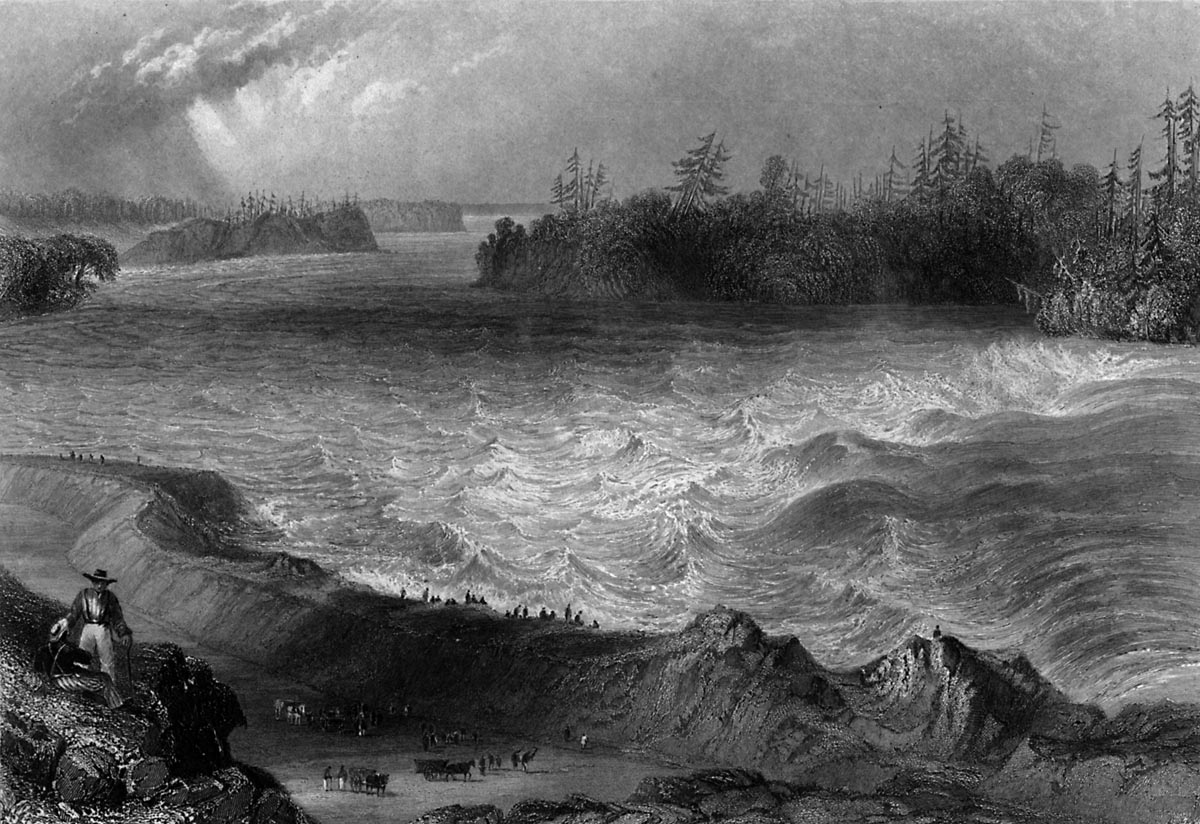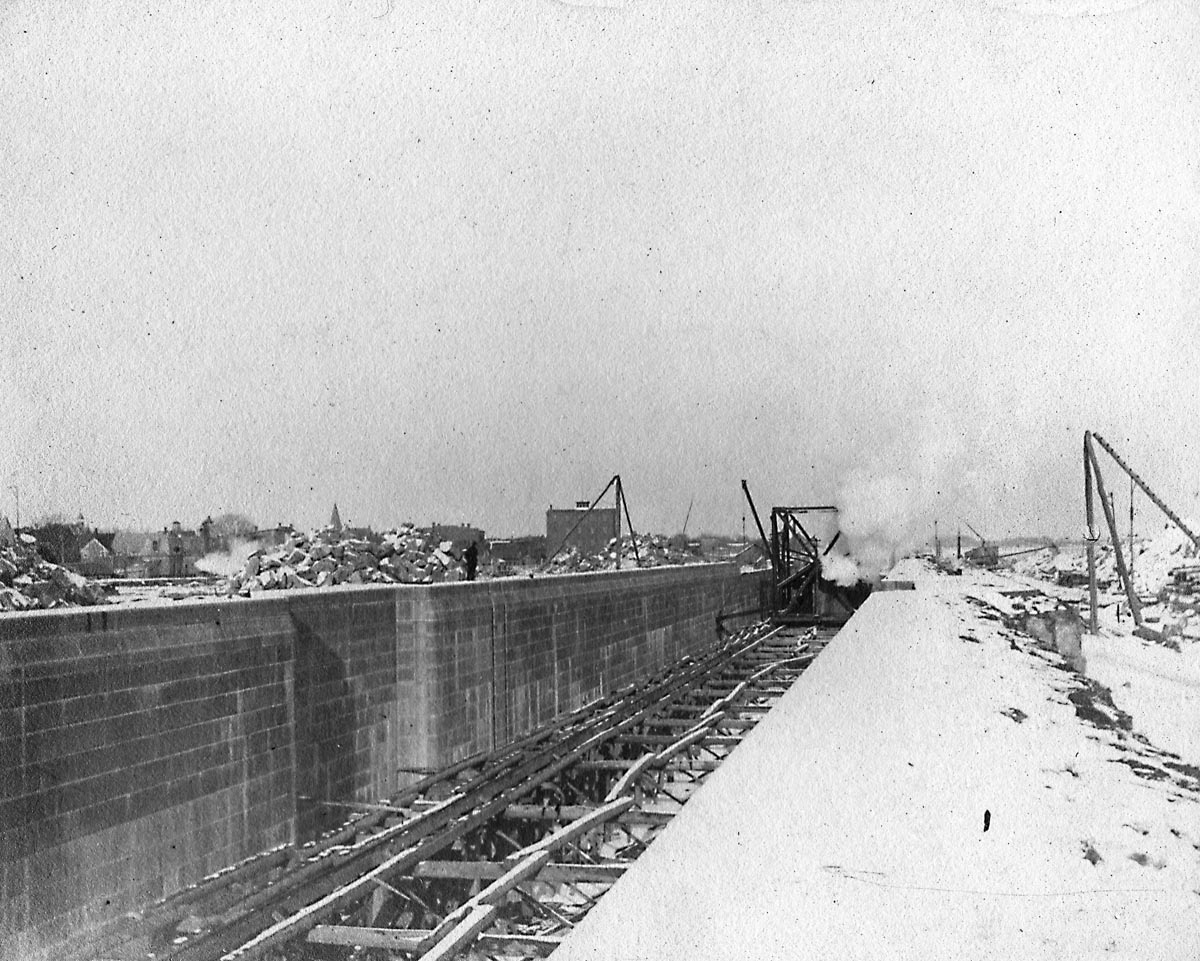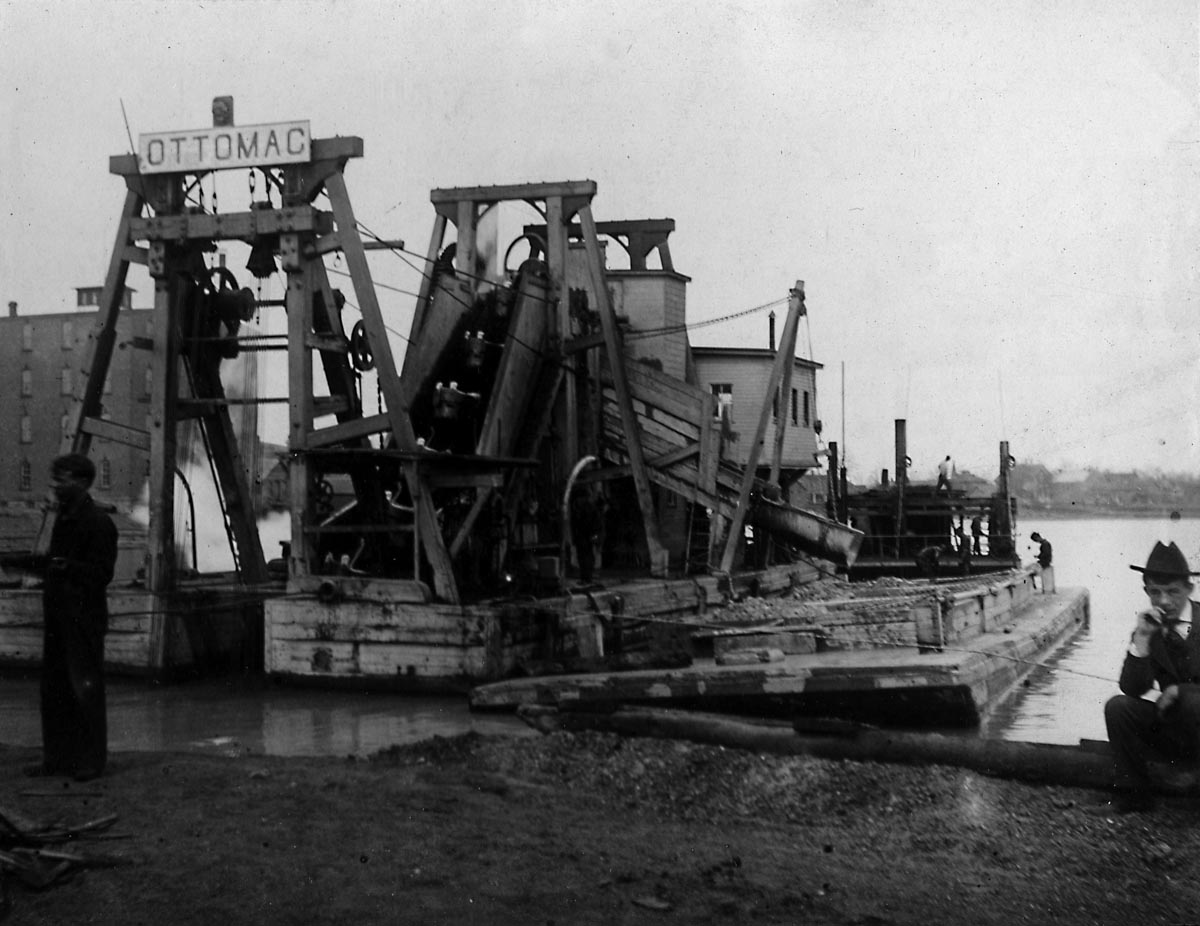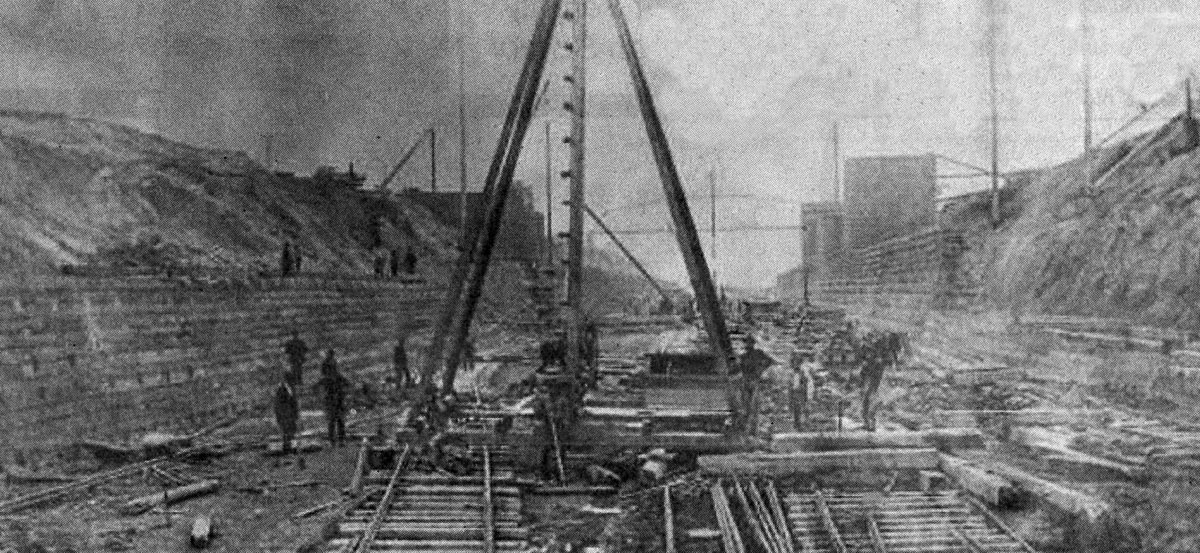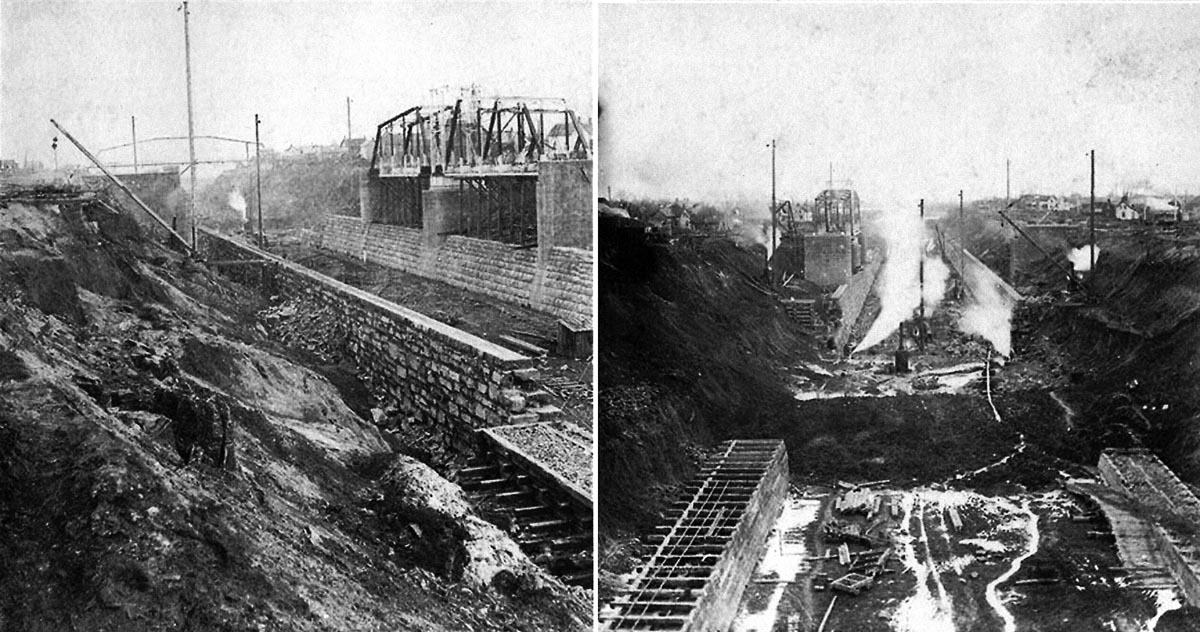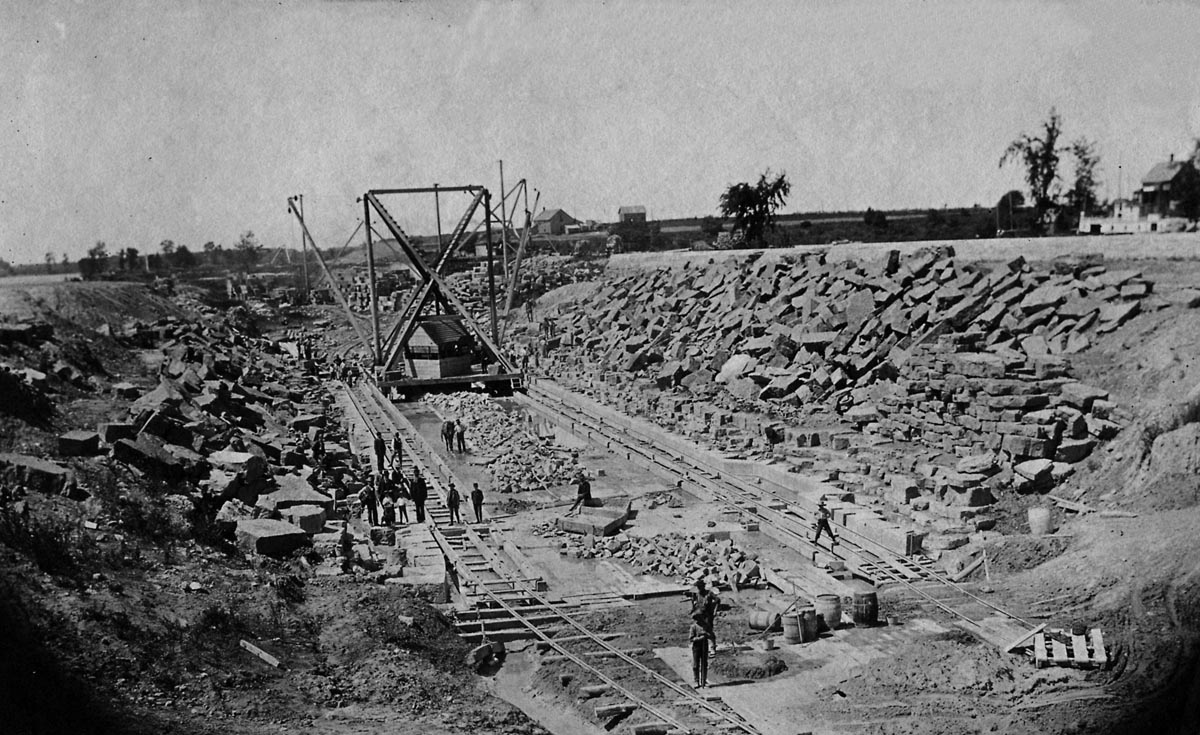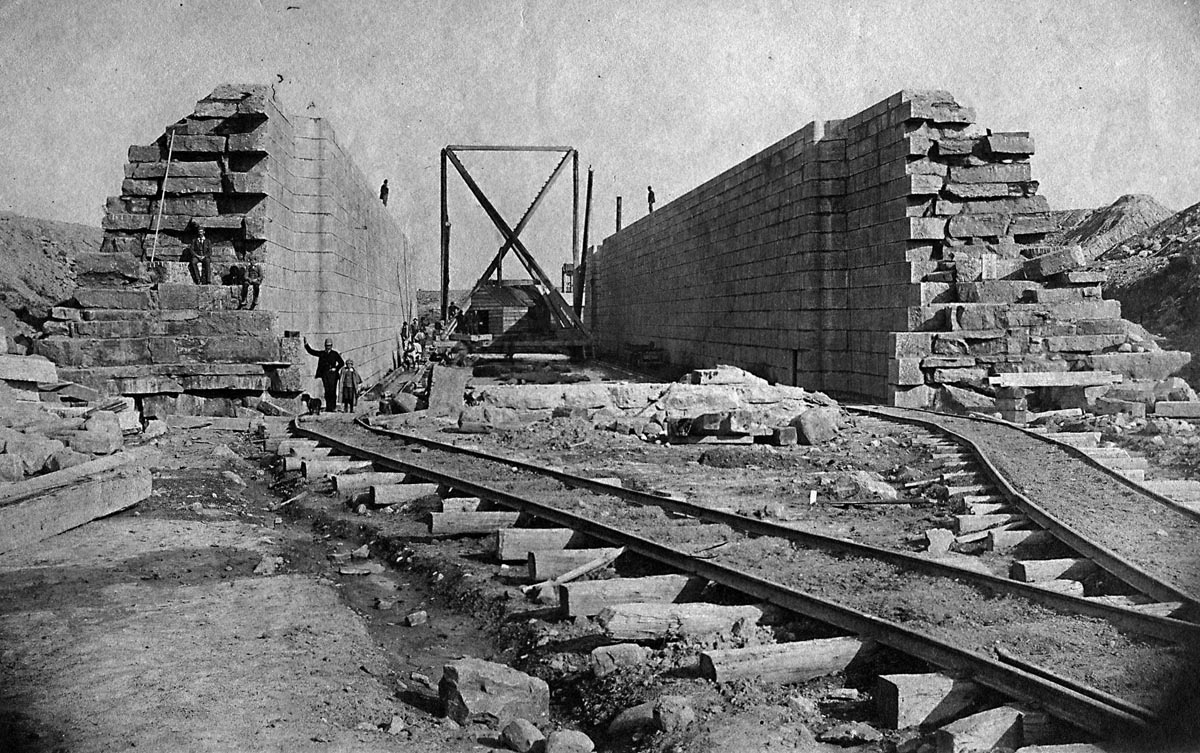Canal Building (Prior to the Seaway)
Building a set of canals from Montreal to the upper St. Lawrence is a massive undertaking under any circumstances, whether it was in the modern era after World War II or before the Confederation of Canada. Not only was this project undertaken when Canada was still in its infancy, but also when it was more heavily populated. Each time period had its own peculiar problems with securing financing, engineering, settling political issues across the international boundary, and moving people and their villages out of the way.
|
The demand to build the canals was driven by population increases with the associated volume of trade they produced. Goods and people had to be transported up and down the river at a reasonable cost and speed. The result was the St. Lawrence Canals were constructed and then rebuilt twice. Therefore the building of canals advanced from the pick and shovel gangs of the 1830's to the giant earth movers of the 1950's. This section will illustrate to some extent how this was done.
|
SHCB300 - Canal Construction Next to Long Sault Rapids
Artists drawing of the construction of the canal bank leading up to Dickenson's Landing. The rapids seen here are the Long Sault Rapids. The date would be sometime in the late 1830's.
SHCB510: Lock 25 at Iroquois under construction before 1901.
The limestone blocks were placed on the walls one at a time. The steam powered crane travelled along the wooden structure inside the lock chamber.
SHCB520: Steam Dredge OTTOMAC in Iroquois Harbour.
This wooden hulled dredge uses a continuous chain of buckets to bring material from the river bottom up to the top of a slide. The material is dumped onto the slide and then gravity feeds it into a scow lashed alongside.
SHCB530: Looking east from the bottom of the Cardinal Cut.
The new canal was built with steam shovels, donkey engines and cranes. Work started on the canal in 1887 and was finished in 1901. At the time the canal was a masterpiece of engineeering with its lime-stone blocked walls and 14 foot draft.
SHCB540: Two views of the Cardinal Cut construction.
The left scene is looking east. The temporary bridge across the cut can be seen in the background. The scene on the right is from that temporary bridge looking west up the cut. Today the area where the steam plume can be seen is filled in from there to the west for several hundred yards.
Photo courtesy Robert Baker.
SHCB550: Construction of a new lock begins.
The first row of limestone blocks has been laid in the “River Lock” or Lock 28. Behind the man on the lower right is a recess in the wall which is necessary for the lock gate to swing completely out of the way of ships passing through the lock. On the upper right a ship is sailing up the old canal.
Photo courtesy of the Bascom collection.
SHCB560: The lock walls seen from the west end of Lock 28.
Looking East - New Lift Lock - Galop Canal - 1892. The new Lock 28 is complete up to the point where the wooden gates will be hung on their pintles. The recesses for the gates are on both ends of these incomplete walls.
Photo courtesy of the Bascom collection.

